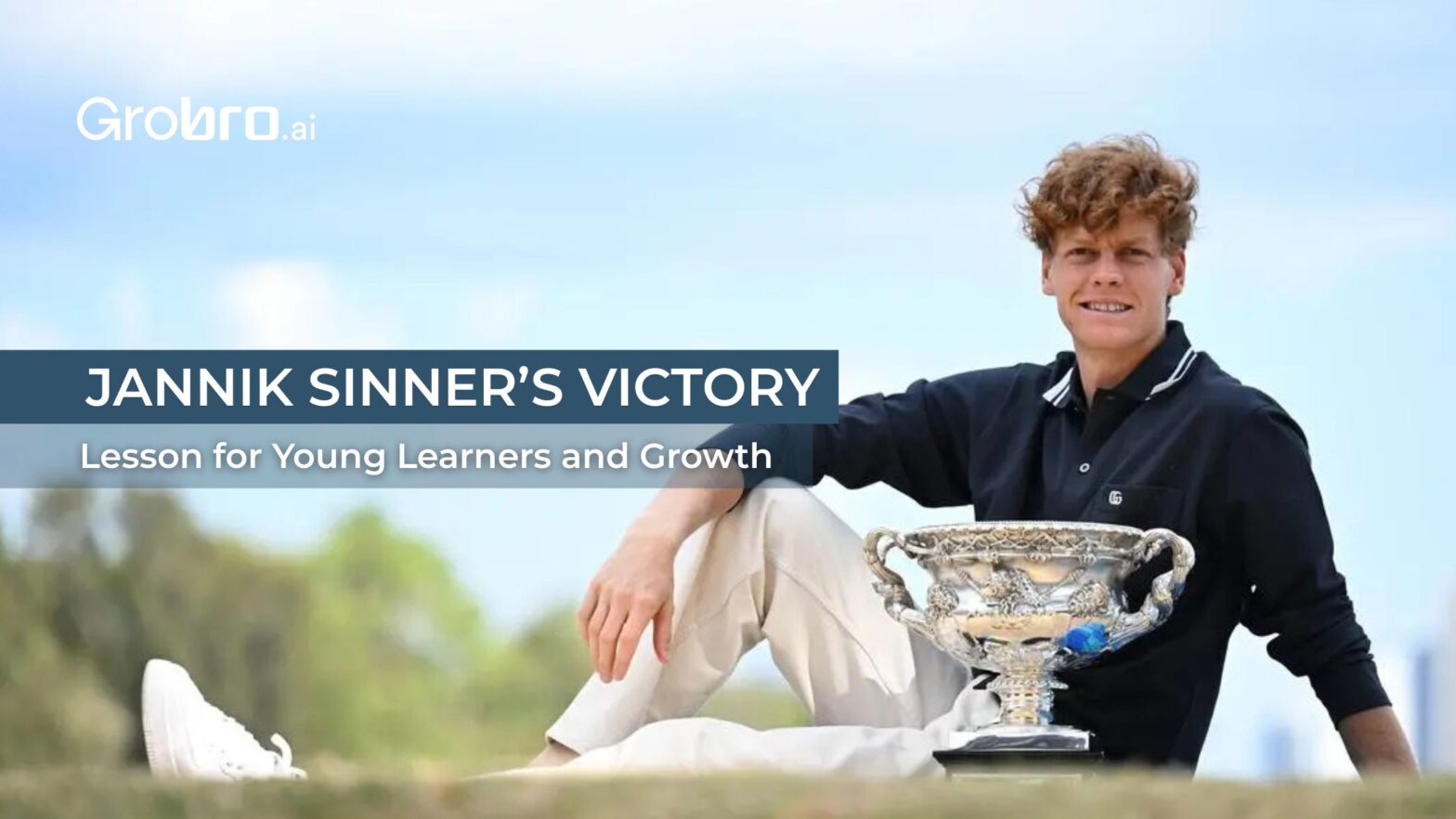What Jannik Sinner Taught Me About Young Learners and Growth

Jannik Sinner’s historic win at Wimbledon 2025 wasn’t just about a trophy—it became a quiet lesson in how we define progress. At just 23, Sinner became the first Italian man to win the iconic tournament, dominating the final with poise and precision. No over-the-top celebration. No dramatic breakdown. Just calm acknowledgment—a nod to his team, a quiet smile, and that was it.
It was powerful. Not because it was loud, but because it was so clearly earned. And as I watched that moment unfold, I couldn’t stop thinking: “This is what progress actually looks like.”
It Wasn’t About the Win. It Was About the Way.
There was no sudden spike in Sinner’s performance, no flash-in-the-pan brilliance. His win—straight sets, zero spectacle—felt like the final piece of a puzzle that had been quietly coming together for years. It wasn’t a moment of arrival. It was a moment of confirmation.
What made it unforgettable wasn’t the match itself, but how deeply it reflected the journey behind it:
- Years of steady training
- Hidden effort and quiet discipline
- Consistent personal growth—offscreen and off-court
It reminded me that not all progress is visible. And more importantly: not all real wins look like showstoppers.
And Suddenly, I Thought About Learning—Especially Reading
Sinner’s controlled, composed demeanor on Centre Court brought my mind back to the journeys many children go through, particularly in reading and comprehension. Unlike tennis, there’s no cheering crowd, no headline moment when a child suddenly “gets it.” Most of their progress happens silently.
- In quiet corners.
- In consistent effort.
- In invisible milestones that don’t always come with applause.
And that’s often the type of growth we overlook. We tend to measure success in loud, public ways:
- ✔ Top grades
- ✔ Medals
- ✔ Timed benchmarks
- ✔ Speed-based metrics
But for many learners, progress doesn’t arrive in trophy form. It comes as:
- Persistence over time
- A child rereading a tough word for the third time
- A deeper question asked about a story they just read
- The courage to try again—even after struggling yesterday
Not Every Child Walks the Same Path
The problem is—we often compare children’s journeys as if growth is a race:
- We expect all kids to read at the same age
- To comprehend stories in the same way
- To process instructions at the same pace
And when they don’t, we worry. We assume something must be wrong.
But… what if nothing’s wrong at all? What if they’re just moving at their own pace, in the right direction?
This Is the Heart of What We Do at GroBro

At GroBro, we focus on redefining how progress looks in childhood learning—starting with reading. Because reading isn’t just about finishing a book faster.
It’s about:
- Developing understanding
- Building confidence
- Cultivating the patience to grow at the right pace
We don’t push children to read faster than they need to. Instead, we let them:
- Read at their level
- Progress in their time
- Grow with meaning and depth
No pressure. No scoreboard. Just the right support for the learner they already are. Because real progress isn’t measured in pace It’s measured in direction, in character, in confidence.
Just like Sinner’s quiet, composed win—it’s the foundation that matters. The invisible hours. The small, repeated efforts that shape a young mind long before anyone notices.
And that’s what we value at GroBro:
Not quicker wins. But real growth, rooted in purpose.
Final Thought
Let’s stop expecting children to show progress only in public, measurable ways. Let’s start celebrating the quiet commitment it takes to grow. Because the real milestone isn’t how fast they finish. It’s who they’re becoming along the way.



